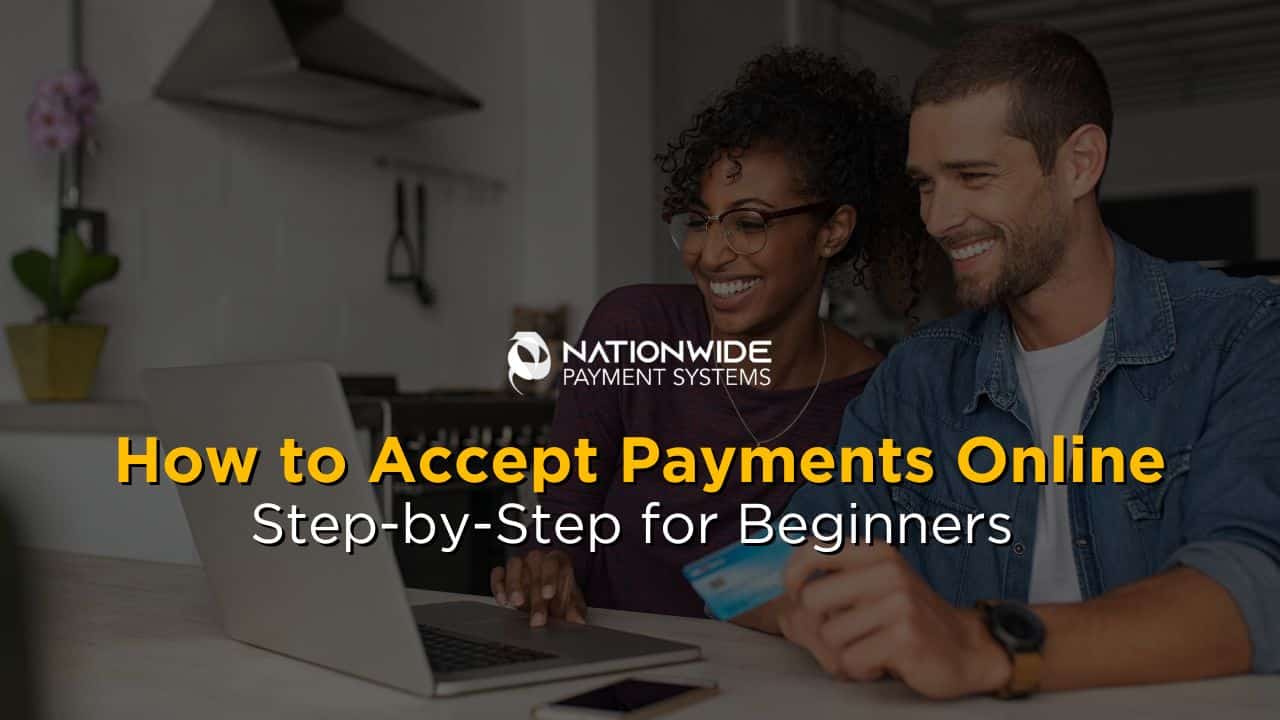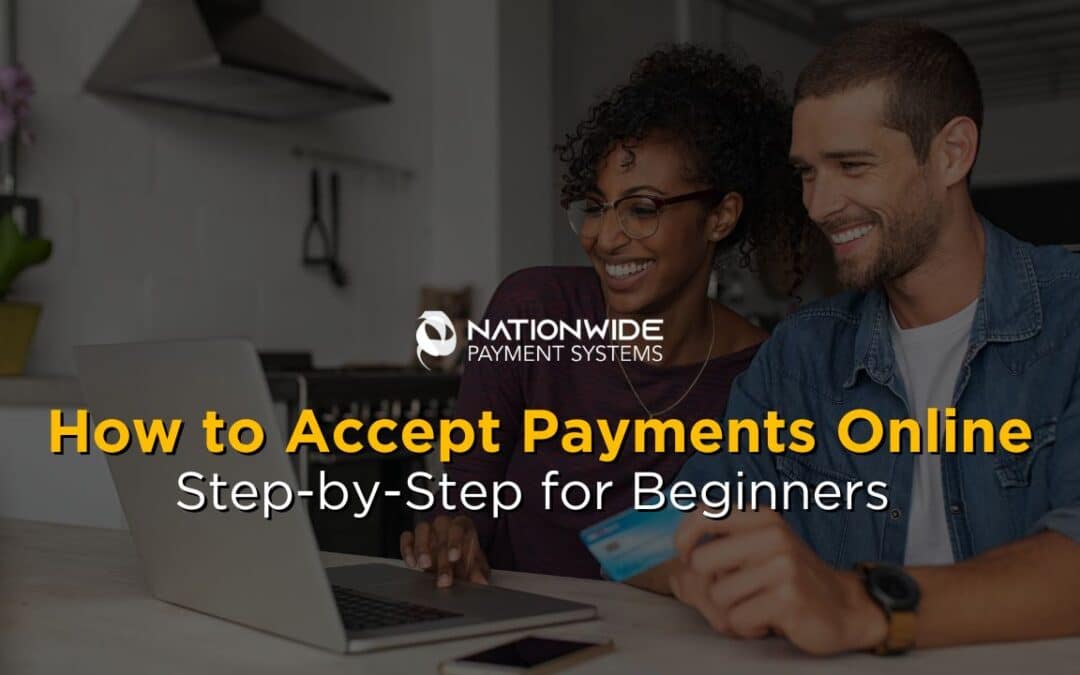How to Accept Payments Online – A Step-by-Step Guide for Beginners
If you’re starting a business—selling candles, designing logos, coaching clients—you need a way to get paid online. But with all the terms flying around (processors, gateways, ACH, merchant accounts), it can feel overwhelming.
Don’t worry. This guide breaks it down step-by-step so you can start collecting payments quickly, securely, and with confidence.
-
Why You Must Accept Online Payments in 2025
Online payments aren’t optional anymore—they’re expected. Today’s customers:
-
Pay with their phones
-
Shop from their laptops
-
Expect fast, secure checkout
Not offering digital payment options? That’s like not having a phone number for your business.
Benefits:
-
Faster cash flow (get paid in 1–2 days)
-
Global reach
-
Better customer experience
-
Simplified bookkeeping
Step 1: Set Up a Business Bank Account
Before you accept payments, you need a business bank account to receive the funds.
Why it matters:
-
Keeps business and personal money separate
-
Helps with taxes and legal protection
-
Looks professional
How to set it up:
-
Choose a business-friendly bank or credit union
-
Bring your business license, EIN, and formation docs
-
Look for perks like mobile banking and low fees
-
Consider getting a business debit and credit card
Step 2: Choose a Payment Processor
Your payment processor moves money from your customer’s card to your business account.
Some include extras like fraud protection, invoicing, and analytics.
Best for Beginners:
-
Stripe – Great for online businesses and developers
-
Square – Ideal for both in-person and online sales
-
PayPal – Easy setup, widely trusted
-
Nationwide Payment Systems (NPS) – Great for small businesses with flexible options: recurring billing, ACH, invoicing, payment links, POS systems, WooCommerce plugin, and more.
Look for:
-
Transparent pricing (Flat rate, Cost Plus, Surcharge, Dual Pricing)
-
Good customer support (phone + email)
-
Easy integration with your website or tools
-
Built-in fraud protection
Step 3: Decide If You Need a Payment Gateway
A payment gateway is the digital guard that encrypts and transmits your customer’s payment securely.
Some processors (like Stripe or Square) include a gateway. Others (like banks) may require a separate one.
You might need a separate gateway if:
-
You’re using a custom website
-
You want to use your own merchant account
-
You need features like subscriptions or multi-currency support
Top Gateways:
-
Authorize.net
-
NMI
-
NPS ONE
Step 4: Choose an E-Commerce Platform or Invoicing Tool
Now decide how you’ll accept payments—through a website or by sending invoices.
Option 1: E-Commerce Platforms (For Selling Products or Services)
Use these if you’re selling online:
-
Shopify – All-in-one and beginner-friendly
-
Wix – Drag-and-drop, easy to use
-
Squarespace – Stylish templates, simple store setup
-
WooCommerce – Flexible for WordPress users (NPS offers a free plugin)
Option 2: Invoicing Tools (For Services & Freelancers)
Perfect if you’re offering services like coaching, design, or consulting:
-
QuickBooks Online
-
NPS ONE and Clickbillr – Both integrate with QuickBooks and support “Pay Now” invoice links
Pro Tip: Make sure your platform and processor integrate smoothly—this saves time and accounting headaches.
Step 5: Apply for a Merchant Account
A merchant account is a special bank account that holds card payments before transferring them to your business bank account.
Stripe, Square, and PayPal include this by default, but having a dedicated merchant account (like from NPS) can offer:
-
Faster deposits (even same-day)
-
Better reporting tools
-
More control + fraud protection
-
Potential for lower fees as you grow
You’ll need:
-
Business license & EIN
-
Voided check or bank paperwork
-
Monthly sales estimates
-
Possibly your personal credit info
Step 6: Set Up and Test Your Checkout System
Now it’s time to create your checkout or payment flow.
Checklist:
-
Connect your payment processor to your website or app
-
Customize checkout with your logo, colors, and secure icons
-
Enable multiple payment options (cards, Apple Pay, etc.)
-
Set up email receipts and notifications
-
Add tax/shipping calculators if needed
Test it:
-
Make test payments
-
Try different devices (mobile, tablet, desktop)
-
Make sure money lands in your dashboard
First impressions matter—make checkout seamless.
STEP 7: SECURE YOUR WEBSITE
Security isn’t optional—protect your business and your customers.
MUST-HAVES:
-
SSL Certificate (your site should show https://)
-
PCI Compliance (most processors help with this)
-
Data encryption
-
Fraud detection tools
-
Two-factor authentication
-
Chargeback prevention tools (Ethoca, RDR, CDRN)
COMPARING ONLINE PAYMENT METHODS
Here’s a quick breakdown of what to offer:
Payment Method Best For Notes Credit/Debit Cards Everyone Fast, familiar, high conversion ACH/Bank Transfers Services, B2B Lower fees, slower payouts Apple Pay / Google Pay Mobile shoppers Super fast, growing in popularity Buy Now, Pay Later Retail, eCommerce Boosts sales, reduces cart abandonment
COMMON MISTAKES TO AVOID
Save time, money, and stress by avoiding these:
-
Using your personal bank account (separate is smarter)
-
Not reading the fine print on fees
-
Skipping checkout testing
-
Forgetting security protocols
-
Offering only one payment method
-
No plan for refunds or chargebacks
-
Missing required website policies (Privacy Policy, Terms, Refunds, Disclosures)
REAL-LIFE EXAMPLE: SAM’S FREELANCE SUCCESS
Sam, a Florida-based web designer, started by emailing PDF invoices and using Venmo. But as his business grew, managing payments became messy.
He contacted Nationwide Payment Systems and set up:
-
A business bank account
-
A dedicated merchant account
-
Online invoicing through QuickBooks
-
Payment links on his website
Results in 1 Month:
-
80% faster payment collection
-
Almost zero unpaid invoices
-
Doubled income thanks to more credibility
Lesson: A clean, professional payment system builds trust—and trust leads to more clients and more revenue.
READY TO GET PAID?
Accepting payments online doesn’t have to be complicated. With the right tools and support, you can go from side hustle to serious business in no time.
-
CLICK HERE TO FIND MORE ABOUT OUR PROGRAMS
FAQ: Frequently Asked Questions
Do I need a business bank account to accept online payments?
Yes. You should always use a business bank account to keep your finances organized and compliant. It protects you legally, simplifies taxes, and looks more professional.
What is a payment processor?
A payment processor is a service that handles credit card or digital payment transactions between your customer’s bank and your business account. Examples include Stripe, Square, PayPal, and Nationwide Payment Systems.
What’s the difference between a payment processor and a payment gateway?
-
A payment processor moves the money.
-
A payment gateway encrypts and transmits payment info securely.
Some platforms (like Stripe or Square) include both. If you use your own merchant account or a custom website, you may need a separate gateway.
What is a merchant account, and do I need one?
A merchant account is a type of bank account used to receive credit card payments. Some processors give you one automatically (e.g., Stripe), while others (like Nationwide Payment Systems) offer dedicated accounts with more flexibility and lower fees as you grow.
How long does it take to receive payments?
Most processors deposit funds within 1–2 business days, though some can offer same-day payouts if you have a dedicated merchant account.








